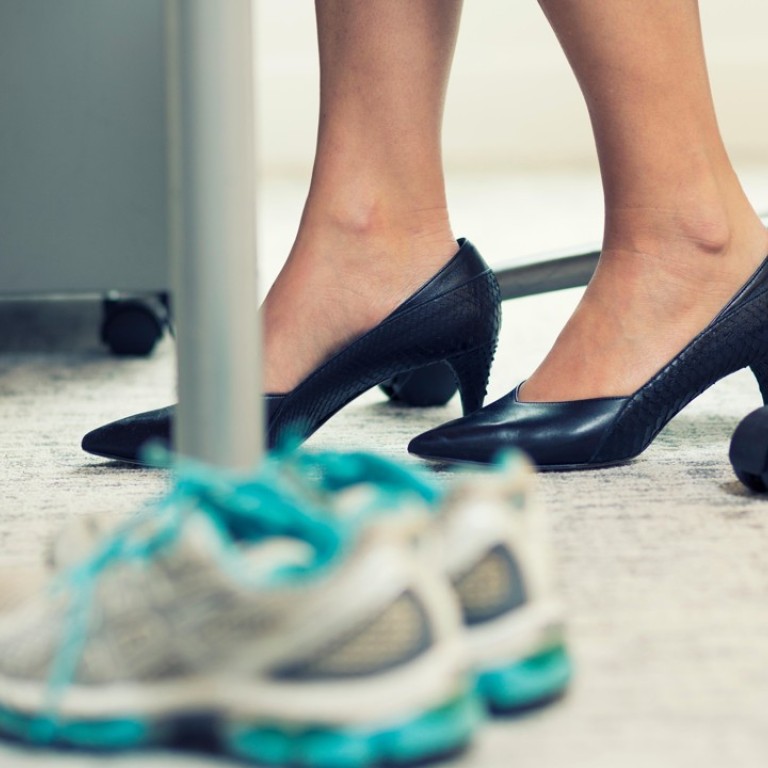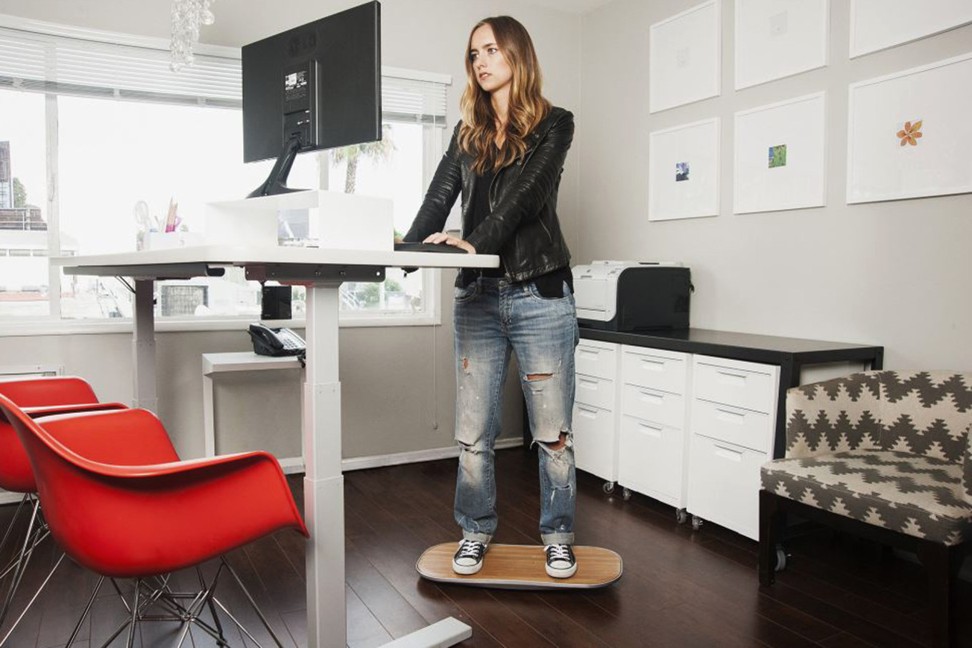
If sitting is the new smoking, firms need to get staff on their feet – or risk being held liable for health effects of sedentary work
Researchers in the US say employers need to help reduce the harmful side effects of prolonged sitting – high blood pressure and cholesterol, excess body fat, increased risk of heart disease and cancer – or face bill for costs of inactivity
The news that sitting is harmful to your health is nothing new, but two researchers at Drexel University in the United States now believe it could become the newest workplace liability.
“The question becomes when the employers have more control over your workday – and the vast majority do – what can and should the employer be doing to encourage movement at work?” said Natalie Pedersen, an assistant professor of legal studies at Drexel University’s LeBow College of Business in Pennsylvania.
Anyone who works in front of a computer sits for about eight hours a day. Factor in commuting and it means the typical worker spends up to half of their waking life sitting, a study in the Annals of Internal Medicine found.
Prolonged sitting has been linked to high blood pressure, excess body fat, high cholesterol, and an increased risk of heart disease and cancer.
There are things out there that employers can do that are not terribly expensive and can make a difference
Pederson and Lisa Eisenberg, a graduate of Drexel’s Thomas R. Kline School of Law and now a judicial clerk, looked at legal cases in all 50 US states to see whether employers should be held liable for the harm caused by sedentary workplaces. They determined employers need to help reduce the harmful side effects of sitting for their employees.

Their paper, “If Sitting is the New Smoking, What Does This Mean for Employers? A Look at Potential Worker’s Compensation Claims in the Sedentary Workplace,” will be published in 2018 in the Lewis & Clark Law Review.
“There are things out there that employers can do that are not terribly expensive and can make a difference,” said Pedersen.
Employers could give workers short breaks every half-hour to walk around, to hold standing meetings instead of sitting, or suggest workers stand when taking phone calls, Pedersen said. If possible, employers could also incorporate active design into the work space, such as moving the coffee makers or toilets farther from the desk areas or providing treadmill desks or chairs that come with resistance bands for on-the-job strength training.

In Denmark, companies have been legally required since 2014 to provide employees with an option for standing desks. Australia and Canada have proactive campaigns that prompt companies to design workplaces that encourage activity and to adopt a more health-focused culture. In Britain, the non-profit Ukactive offers solutions to combat sedentary work life by making fitness facilities more accessible and developing workplace wellness programmes.
In the United States, Massachusetts software company Pegasystems, Houston Methodist Hospital, and BP have given their employees Fitbits so they can track their daily steps.

American Express and GlaxoSmithKline provide free health coaching. ConAgra instituted a bonus health savings contribution for employees who participate in a health assessment. Online retailer Zappos instituted “Recess Tuesdays” so employees can play tetherball, volleyball, basketball, and do other activities in an outdoor plaza. However, companies cannot compel workers to participate in office-based wellness programmes.
Will standing desks in classrooms help kids to learn or encourage them to mess about more?
Eisenberg notes that the financial costs of inactivity have yet to be studied and quantified, whether they are borne by employers, employees, private insurance companies, or government health care programmes.
“The costs of the health care services to remedy these harms doesn’t just evaporate,” Eisenberg said.

